Domain Eukaryota Class Cryptophyceae Family Cryptomonadaceae Rank Genus | Scientific name Cryptomonas | |
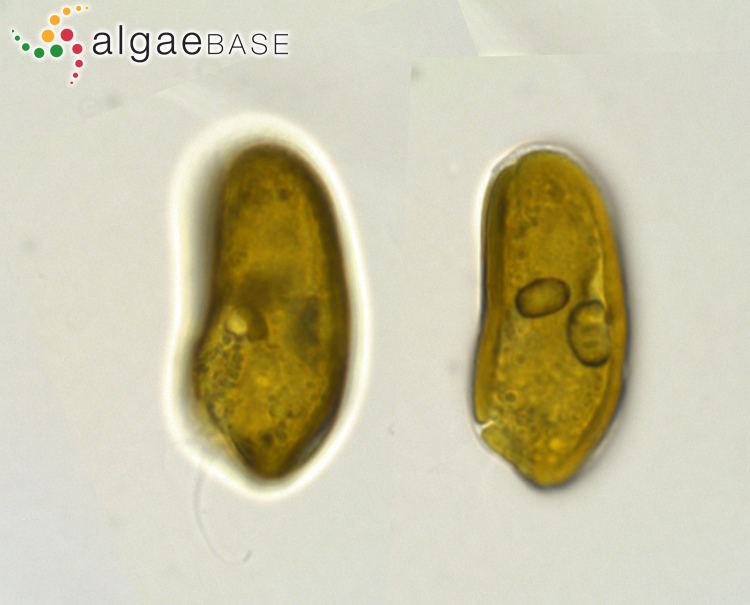 | ||
Similar Chroomonas, Rhodomonas, Chilomonas, Dinobryon, Cryptomonadales | ||
Cryptomonas cryptophyta dic polarized light
Cryptomonas is the name-giving genus of the cryptomonads. It is common in freshwater habitats and often forms blooms in greater depths of lakes, or during winter beneath the ice. The cells are usually brownish in color, and have a slit-like furrow at the anterior. They are not known to produce any toxins and are used to feed small zooplankton, which is the food source for small fish in fish farming. In fact, the zooplankton, Ceriodaphnia quadrangula, feeds specifically on Cryptomonas erosa and nothing else. Many species of Crytomonas can only be identified by their molecular signatures. Cryptomonas can be found in several marine ecosystems in Australia.
Contents
- Cryptomonas cryptophyta dic polarized light
- Cryptomonas acuta
- Species
- Genome structure
- Cell Structure metabolism and life cycle
- Ecology
- References
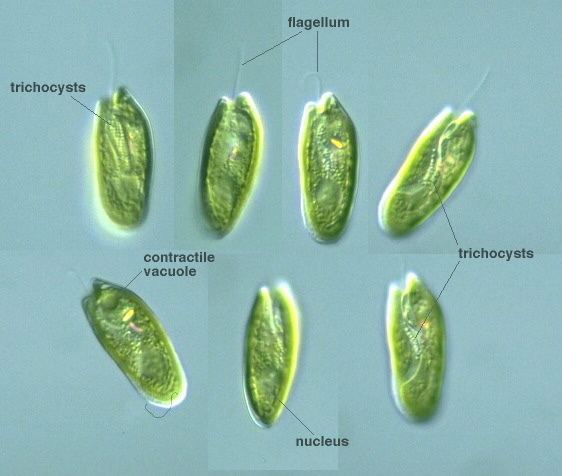
Cryptomonas is a dimorphic genus, meaning it could be either protozoan (Cryptomondida) or alga (Cryptophyceae). Currently there are 26 species of Cryptomonas.
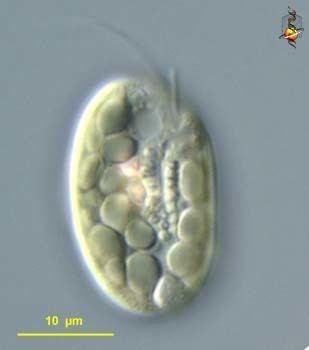
Cryptomonas acuta
Species
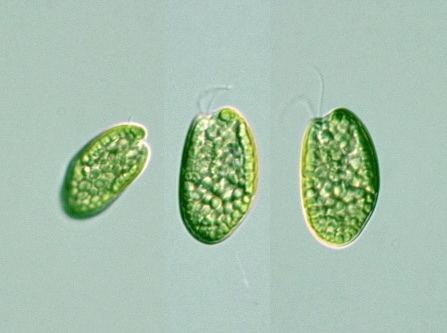
Genome structure
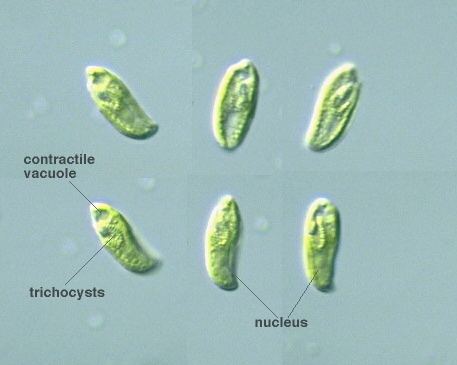
This genus was originally separated into three different genera (Cryptomonas, Campylomonas, and Chilomonas), but after further investigation Campylomonas and Chilomonas were reclassified as a dimorphism under Cryptomonas. Species within Cryptomonas contain four genomes: the nucleus, the nucleomorph, the plastid, and mitochondrial genomes. The plastid genome contains 118 kilobase pairs and is a result of a phage from red alga, which is why Cryptomonas often has a red coloring.
Cell Structure, metabolism, and life cycle
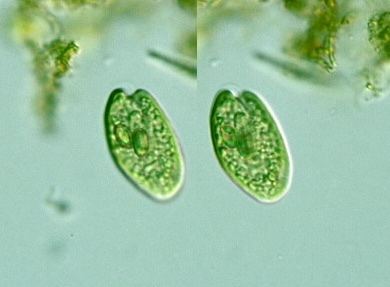
Cryptomonas cells are fairly larger than others; they average about 40 um in size and often take the shape of an oval or ovoid. They have two flagella that are fixed to the cell by four unique microtubular roots. In addition, the flagella are lined with hairs that allow for better movement. Cryptomonas are also photolithotrophs that contribute to oxygenic carbon fixation making them greatly influential to the carbon levels of fresh water environments. They rely on inorganic compounds such as water in order to perform photosynthesis. Replication of Cryptomonas occurs in early summer when fresh water species are also reproducing. Cryptomonas replicates via mitosis that only takes about ten minutes.
Ecology
Cryptomonas function like Diatoms; they are large, grow slowly, and are limited in nutrients. It also migrates between layers of water in order to reach depths that are ideal for photosynthesis and bacteriograzing, as well avoiding organisms that feed on phytoplankton. Typically they are found at depths of 0 to 102 meters and in a temperature range of -1.4 to 1.5 degrees Celsius. Cryptomonas seem to grow and survive with little competition.
Some sources recommend merging Campylomonas and Chilomonas into Cryptomonas.
